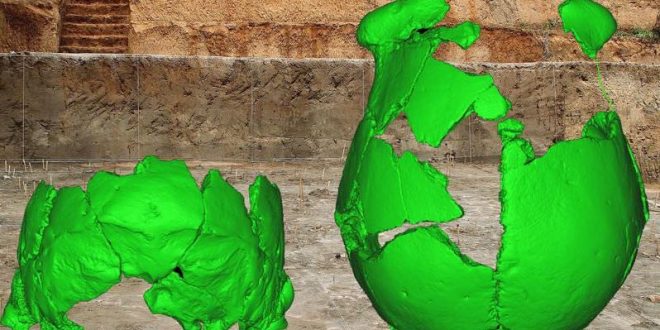Ancient skull fragments found in central China have characteristics like their Neanderthal cousins from halfway across the world, but also have some modern human variations, according to a new paper published this week in Science.
The two species definitely mated, but there are some big differences between them, from Neanderthals’ big brows and squat figures to their distinctive DNA. Now, reports Ben Guarino for The Washington Post, skulls that seem to be both human and Neanderthal just added an intriguing twist to that debate.
The skulls, which are described in a new paper in the journal Science, were discovered in Lingjing, China in 2007 and 2014 and are between 100,000 and 130,000 years old. Researchers are calling them “a morphological mosaic” because of a collage of characteristics.
They’ve got Neanderthals’ ear canals, eastern Eurasian humans’ low and flat brainpans, and similarities to early modern Old World humans, too.
The skulls are distinctive enough that they seem to belong to an entirely different species—one that’s neither human nor Neanderthal, but that shares characteristics of both. One explanation is that they’re Denisovans, a recently discovered ancient human cousin thought to have interbred with both humans and Neanderthals. As SmartNews reported in 2015, only two teeth and a finger bone have given scientists clues about Denisovans so far. But Science Magazine’s Ann Gibbons spoke with experts who say the skulls fit what science knows about Denisovans thus far—even though the research team itself carefully avoids saying the word in its paper or press materials.
Okay, so the team won’t take a stand on whether the skulls are Denisovan. But they tell Gibbons that they do think they’re “a kind of unknown or new archaic human.” The skulls seem to point to region-specific evolution in eastern Asia at a time when multiple hominid species existed.
For Erik Trinkaus, one of the paper’s authors, the skulls are an important glimpse back in time, filling in a gap in the human fossil record. In a release, he says that the skulls point to “the unity and dynamic nature of human evolution.”
As Guarino points out, the team wasn’t able to get genetic material from the skulls, so it will be impossible to figure out which species they’re part of until they’re analyzed and compared to what we know about other hominids. For now, the skulls have raised questions they can’t answer—but they’ve also just made the question of which hominids coexisted and when even more intriguing.
Agencies/Canadajournal

 Canada Journal – News of the World Articles and videos to bring you the biggest Canadian news stories from across the country every day
Canada Journal – News of the World Articles and videos to bring you the biggest Canadian news stories from across the country every day

